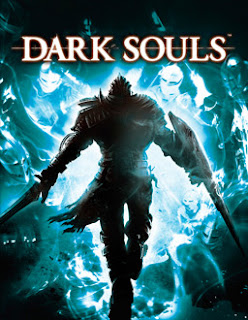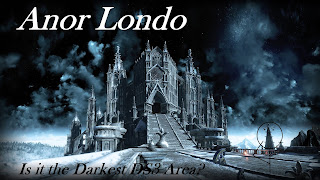Dark Souls tells us a story of a
world dying because of one man’s wish to live. Dark Souls II tells
us of a curse, but also of a war that brewed between man and Giant. Dark
Souls III tells us the story of a royal family divided by belief, one
Pontiff’s malicious reign over the land, and the end of the
world as we know it? Did it just become a thing to add a subplot to every game,
or was Dark Souls III meant to actually be two separate games?
Sunday, March 5, 2017
Pontiff Sulyvahn: The Big Bad of Dark Souls III?
Anor Londo: The Darkest Place in Dark Souls III
Tuesday, February 28, 2017
Untended Graves: The Dark Souls of Dark Souls
There are few things scarier than
the unknown. Of wandering into the unknown and finding yourself completely lost
in the moment, wrapped in fear and questions about where you are and what
exactly is going on. Dark
Souls has managed to grasp
this idea and hold it tight throughout the series; be it the mystical unknown
of Anor Londo, wandering through a strange history in the Forest of Fallen
Giants, or finding your way through the rotting husk of an Undead Settlement. Dark Souls III is the cap of that for the “Souls”
trilogy with one area, if not just a single moment, that defines this feeling
of the unknown: the Untended Graves.
Dark Souls II: The Lowest Beginning?
Dark Souls begins with the Player, the Chosen Undead, left to rot in a
dungeon, unawares of their call to greatness yet to come. They’re rescued and
escape a demon to make it to the peaceful Firelink Shrine, aided only by
whatever starting gear they’re dropped and some broken weapons, a longbow, and
a dagger. The Undead Asylum is a powerful starting point for the series,
foreshadowing the lunacy that the Player will experience as they dive into the
rabbit-hole. Oddly enough, though, I feel that Dark Souls II provides the lowest beginning for the
players.
Consumed King Oceiros: The Main Villain That Could've Been?
Before getting into the meat of
Lothric Castle in Dark Souls
III, the Player is given an opportunity to head into the castle’s garden
area, now a poisonous wasteland for Puss of Mans and powerful Lothric guards
standing at attention in defense of…something. It’s unclear what, at first,
until you see the precariously placed guard standing dead center in front of a
descent of stairs. He’s not guarding something, he’s guarding the man of the
area: the Consumed King of the garden. Given how we’ve been looking for Prince
Lothric, it’s only fitting that this should be King Lothric, the Prince’s father, and the
one whose soul we’re searching for. As it would turn out, Oceiros is instead a
completely optional boss leading to another optional area. Lothric is indeed
the one we’re hunting, but, why is Oceiros here? And why isn’t he the main villain?
Subscribe to:
Comments (Atom)






